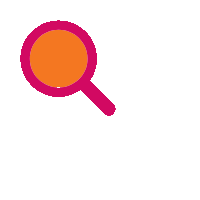The medical aid industry in South Africa encompasses over 8.8 million beneficiaries, contributing approximately R180 billion. Despite these substantial figures, registered schemes have decreased by over 33% in the past decade.
Reports indicate that private healthcare services in South Africa rank among the most expensive globally. This is attributed to factors such as inflation, escalating costs of medical equipment, a scarcity of specialist doctors, and other related challenges. Consequently, recent statistics reveal that more than 83% of the country’s population lacks medical aid coverage.
Nevertheless, the significance of having medical aid in times of need transcends the associated expenses and challenges. Safeguarding one’s health and that of loved ones underscores the importance of obtaining medical aid for financial support during critical situations.
South Africa boasts a healthcare system provided by both public and private entities. It is imperative for locals and immigrants alike to be well-informed about these options for enhanced security in their daily lives.
Understanding Medical Aid
Medical aid shields individuals from the financial burden of treatments and related expenses, with beneficiaries paying a monthly premium to sustain coverage. In cases of accidents, emergencies, or serious illnesses, the medical aid scheme ensures that associated bills are taken care of.
While often equated with medical insurance, medical aids in South Africa are managed by non-profit organizations. Unlike profit-oriented insurance policies, these entities prioritize their members’ interests and are mandated by the government to retain at least 25% of gross income as a safeguard for future claims.
Administered by Trustees appointed by scheme members, medical aids prioritize the well-being of their members without profit motives. With over 75 providers in South Africa, each offering varied payment flexibility, coverage, and costs, all schemes adhere to the rules outlined in the Medical Schemes Act.
Types of Medical Aid Schemes
South Africa has seven main medical aid providers, categorized as open and restricted schemes.
1. Open Medical Aid:
- Available to the general public.
- Open to individuals regardless of employment status.
- Easier to apply with fewer restrictions.
- Typically has a larger member base and more significant funds.
2. Restricted Medical Aid:
- Requires specific qualifications or affiliations.
- May be industry-specific or tied to professional associations.
- Often offers better benefits but may pose challenges if eligibility criteria change.
To assist in choosing the most suitable scheme, the Council for Medical Schemes provides a list of legitimate medical aids in South Africa for comparison.
Why Medical Aid is Essential
Despite economic challenges, allocating around 10% of one’s salary for healthcare, especially for those with families, is recommended. The unpredictability of accidents and unforeseen circumstances underscores the value of having medical aid to alleviate healthcare expenses.
Benefits of Medical Aid
Medical aid schemes adhere to government-prescribed minimum benefits, ensuring that all members have access to specific services, including emergency conditions, defined medical conditions, and chronic diseases. Designated Service Providers (DSPs) play a crucial role, and members must adhere to these providers to avoid additional costs.
Also Check What Are the Best South African Life Insurance Options?
Choosing the Right Medical Aid
Factors to consider when selecting a medical aid in South Africa include:
1. Budget and Needs:
- Evaluate financial capacity and coverage requirements.
- Consider comprehensive coverage for families and basic policies for individuals.
2. Coverage:
- Understand the percentage of costs covered and consider supplementary gap cover.
- Assess coverage for regular check-ups and additional treatments.
3. Waiting Period:
- Be aware of waiting periods, ensuring timely access to benefits.
4. Health Status:
- Assess personal and family health history to determine coverage needs.
5. Administration and Reputation:
- Look for schemes with a high solvency ratio to ensure financial viability.
- Regularly evaluate and compare schemes based on changing needs.
In conclusion, choosing a medical aid in South Africa requires careful consideration of various factors. Regular evaluations, awareness of waiting periods, and understanding the terms and conditions are crucial for making informed decisions that align with individual and family healthcare needs.

